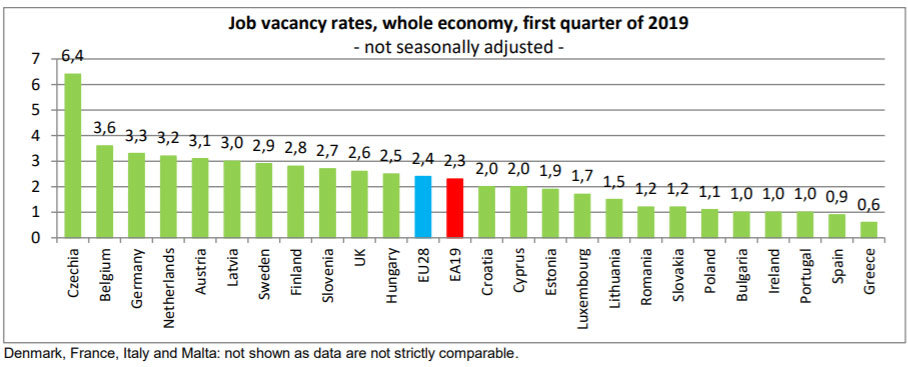Finland outperforms its European partners in the job vacancy rate recorded by its economy. According to the latest comparative data for the European Member States published by the statistical office of the European Union (Eurostat), in Finland the vacancy rate was 2.8% at the end of the first quarter of 2019.
These figures confirm that Finland continues to have problems in filling some of the vacancies that its economy needs to fill, especially in certain specific sectors. Thus, other statistics published last month by the Finnish statistical office (Statistics Finland) already accounted for 63,100 open job vacancies.
However, Finnish employers estimated that 43% of those open positions were hard to fill, for example those in health, social work and construction fields. Around one-half of all open vacancies in Finland were fixed-term jobs.
What is a job vacancy?
According to the definition used by Eurostat, a job vacancy is "a paid post (newly created, unoccupied or about to become vacant) for which the employer is taking active steps to find a suitable candidate from outside the enterprise concerned and is prepared to take more steps and which the employer intends to fill either immediately or in the near future".
Under this definition, "a job vacancy should be open to candidates from outside an enterprise. However, this does not exclude the possibility of the employer recruiting an internal candidate for the post", remarks Eurostat.
According to the calculations of the EU statistical office, the job vacancy rate in the euro area (EA19) was 2.3% in the first quarter of 2019, stable compared with the previous quarter and up from 2.1% in the first quarter of 2018.
In the EU28, the job vacancy rate was 2.4% in the first quarter of 2019, up from 2.3% in the previous quarter and from 2.2% in the first quarter of 2018. Source: Statistics Finland.
Source: Statistics Finland.
The main economic sectors
In the euro area, the job vacancy rate in the first quarter of 2019 was 2% in industry and construction, and 2.6% in services. In the EU28, the rate was 2.2% in industry and construction, and 2.6% in services.
As regards Finland, the vacancy rate is 2.8% for the economy as a whole. However, the detailed analysis by the main economic activity branches shows that it is even higher in the fields of industry and construction (3.1%) and services (3.0%).
Among the different Member States for which comparable data are available, the highest job vacancy rates in the first quarter of 2019 were recorded in Czechia (6.4%), Belgium (3.6%) and Germany (3.3%).
By contrast, the lowest rates were observed in Greece (0.6%), Spain (0.9%) and Portugal, Ireland and Bulgaria (all 1.0%).
Compared with the same quarter of the previous year, the job vacancy rate in the first quarter of 2019 rose in fourteen Member States, remained stable in nine but fell in Greece, Croatia, Lithuania, Poland and Malta (all by -0.1 percentage points).
The largest increases were registered in Czechia (+1.6 pp), Cyprus (+0.8 pp), Latvia (+0.6 pp), Germany and the Netherlands (both +0.4 percentage points).









